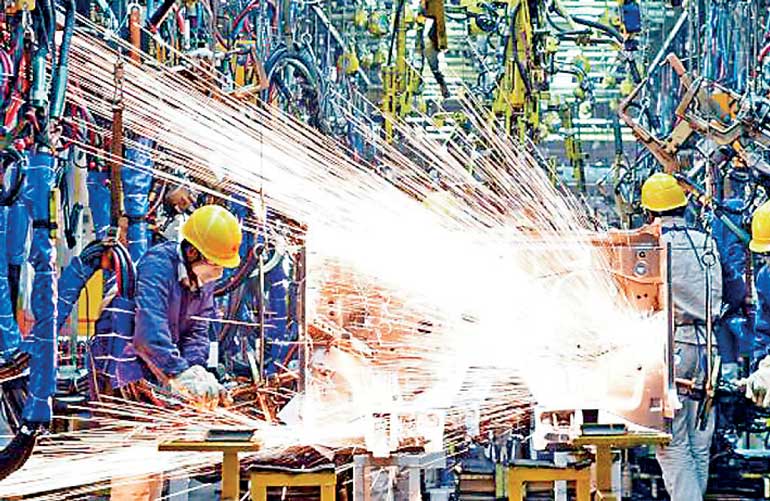Thursday Feb 13, 2025
Thursday Feb 13, 2025
Wednesday, 30 December 2015 00:00 - - {{hitsCtrl.values.hits}}

Reuters: Activity in China’s manufacturing sector is expected to have contracted for a fifth straight month in December, a Reuters poll showed, likely consigning the world’s second-largest economy to its slowest annual growth in a quarter of a century.
The official manufacturing Purchasing Managers’ Index (PMI) is forecast to inch up to 49.7 from November’s 49.6, according to a median forecast of 27 economists in a Reuters poll.
A reading below 50 points suggests a contraction in activity, while a reading above indicates an expansion on a monthly basis.
The official PMI factory reading will be released on Friday along with the official services PMI.
Analysts expect only a marginal improvement in the vast manufacturing sector in December from November, when activity fell to a three-year low.
Chronic overcapacity, sluggish demand at home and abroad and deflationary pressures are expected to continue to weigh on the sector next year.
“There were some bright spots in the economy in December such as a continued recovery in the housing market and an improvement in auto sales,” said Nie Wen, an analyst at Hwabao Trust in Shanghai.
“But performances in these sectors do not necessarily boost the PMI above the 50-point level due to contractions in other industries.”
Vehicle sales in China have rebounded after the government cut taxes on smaller cars from 1 October.
Official data on Sunday showed Chinese industrial profits fell 1.4% in November from a year earlier, marking a sixth consecutive month of decline.
In a bid to prevent a sharper economic slowdown, Beijing has rolled out a series of stimulus measures and monetary policy easing over the past year and analysts expect further steps in 2016.
China’s economic growth is expected to cool from 7.3% in 2014 to 6.9% this year, the central bank said in a recent work paper, its slowest pace in a quarter of a century. Growth could ease further to 6.8% next year. Some China watchers, however, believe real growth levels are already much weaker than official data suggest.
Top leaders last week outlined the main economic targets for 2016, saying the government will push forward ‘supply-side reform’ to help generate new growth engines.
The government also vowed that it will adopt a more flexible fiscal policy, including gradually increasing fiscal deficit ratio and expanding its budget deficit.
President Xi has said China must keep annual average growth at no less than 6.5% over the next five years to reach a goal of doubling gross domestic product and per capita income by 2020 from 2010.China is set to release fourth quarter and full-year GDP data on 19 January.
Discover Kapruka, the leading online shopping platform in Sri Lanka, where you can conveniently send Gifts and Flowers to your loved ones for any event including Valentine ’s Day. Explore a wide range of popular Shopping Categories on Kapruka, including Toys, Groceries, Electronics, Birthday Cakes, Fruits, Chocolates, Flower Bouquets, Clothing, Watches, Lingerie, Gift Sets and Jewellery. Also if you’re interested in selling with Kapruka, Partner Central by Kapruka is the best solution to start with. Moreover, through Kapruka Global Shop, you can also enjoy the convenience of purchasing products from renowned platforms like Amazon and eBay and have them delivered to Sri Lanka.
Discover Kapruka, the leading online shopping platform in Sri Lanka, where you can conveniently send Gifts and Flowers to your loved ones for any event including Valentine ’s Day. Explore a wide range of popular Shopping Categories on Kapruka, including Toys, Groceries, Electronics, Birthday Cakes, Fruits, Chocolates, Flower Bouquets, Clothing, Watches, Lingerie, Gift Sets and Jewellery. Also if you’re interested in selling with Kapruka, Partner Central by Kapruka is the best solution to start with. Moreover, through Kapruka Global Shop, you can also enjoy the convenience of purchasing products from renowned platforms like Amazon and eBay and have them delivered to Sri Lanka.